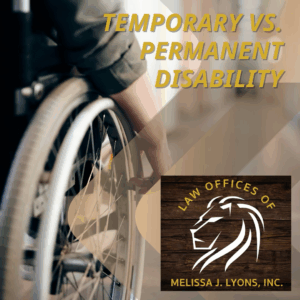Suffering an injury at work is always tough. The stress of going through the workers’ compensation process can make it even tougher. One of the common questions people have when they’re injured is, “What’s the difference between temporary disability and permanent disability?”

What is the difference?
Temporary and permanent disability are both there to provide compensation for the employee while away from work.
When you suffer from an injury, temporary disability will provide financial compensation for up to 104 weeks until you reach maximum medical improvement (MMI) or reach the 104-week cap, whichever comes first.
What payments will I receive with temporary disability?
The State of California Injured Workers Guidebook is an excellent resource.
Temporary disability payments are usually two-thirds gross wages you earned before you were injured. However, sometimes those payments may be less than two-thirds of your wages if you’re at the maximum weekly payable in California.
What are permanent disability benefits?
If you can no longer perform your job or your injury affects your ability to earn a living, permanent disability benefits are there to help. In some cases, you may be entitled to permanent disability benefits, if your injury affects your ability to do your job at the level you were able to previously perform. A medical doctor (PTP and/or QME/AME) determine your level of permanent disability, if any.
If the process seems confusing, we’re here to advocate for you. We navigate the workers’ compensation system in California every day, and help ease the stress of handling the process.